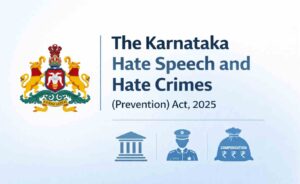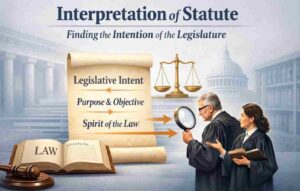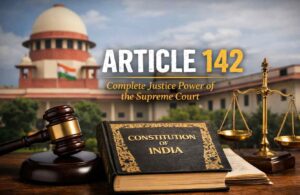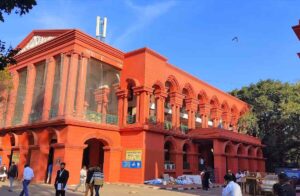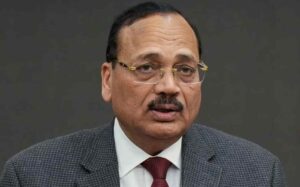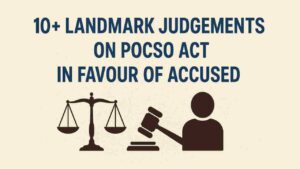The Right against Exploitation, enshrined in Articles 23 and 24 of the Indian Constitution, prohibits human trafficking, forced labor, and child labor in hazardous workplaces. It safeguards human dignity, ensuring fair treatment and freedom from coercion, aligning with global human rights standards and labor laws.
Fundamental rights form the cornerstone of any democratic society, serving as the guardians of individual liberty, dignity, and equality.
In the Indian context, the Constitution not only enshrines these rights but also underscores the state’s obligation to ensure that every citizen is free from any form of exploitation.
Among the six categories of fundamental rights, the Right against Exploitation—codified under Articles 23 and 24—stands out as a powerful instrument in combating human trafficking, forced labor, and the employment of children in hazardous conditions.
Introduction
Fundamental rights are essential to the development of a dignified and just society. In India, these rights are enshrined in Part III of the Constitution, serving as an eternal bulwark against any form of discrimination, exploitation, or arbitrary state action.
Among these, the Right against Exploitation expressed through Articles 23 and 24 aims to secure individuals from various exploitative practices that compromise human dignity and freedom.

Article 23 prohibits “traffic in human beings, begar, and other similar forms of forced labour,” while Article 24 specifically protects children by prohibiting their employment in factories, mines, or any other hazardous employment.
Together, these provisions not only reflect the aspirations of a post-colonial, egalitarian society but also mark India’s commitment to international human rights norms.
Over the decades, these articles have been interpreted expansively by the judiciary, leading to the abolition of archaic practices such as begar, and paving the way for a host of legislations aimed at curbing human trafficking, forced labor, and child exploitation.
Historical Background and Context
Before India’s independence in 1947, the social and economic landscape was marred by centuries-old practices that exploited the weaker sections of society.
Systems such as slavery, begar (unpaid labor), bonded labor, and other forms of forced labor were deeply entrenched.
During the colonial period, these practices were further intensified by exploitative policies, leaving vast sections of the population vulnerable and disenfranchised.
Begar and Bonded Labor:
The practice of begar, in which individuals were compelled to work without any remuneration, was not only a remnant of feudal arrangements but also a tool of subjugation under colonial rule.

Similarly, the system of bonded labor where individuals or families were forced to work to repay debts was widespread, particularly among marginalized communities.
These exploitative practices were in direct contradiction to the ideals of human dignity and equality that later became central to the Indian independence movement.
Post-Independence Vision:
When India adopted its Constitution in 1950, the framers were determined to break with the exploitative past.
The drafting committees, influenced by global human rights instruments like the Universal Declaration of Human Rights (UDHR), sought to enshrine rights that would ensure the protection of every citizen from exploitation.
Thus, Articles 23 and 24 were introduced as a direct response to the injustices of forced and child labor, aiming to safeguard human dignity and promote social justice.
International Influence:
International conventions, such as those of the International Labour Organization (ILO), played a pivotal role in shaping India’s labor policies.
The ILO conventions on minimum age and worst forms of child labor, along with human trafficking protocols, provided a framework that the Indian Constitution sought to mirror.
By embedding these principles into its fundamental rights, India positioned itself as a progressive state committed to upholding global standards of human rights.
The historical struggle against exploitation is not merely a relic of the past; it continues to inform contemporary debates and policies.
Although significant progress has been made through judicial activism and legislative reforms, challenges persist in fully eradicating exploitative practices—especially in the informal sectors of the economy.
Text and Meaning of Articles 23 and 24
The strength of any constitutional right lies in its precise wording, interpretation, and enforcement.
In this section, we will explore the text of Articles 23 and 24, unpack their legal significance, and explore how they reflect the broader values of dignity, freedom, and social justice.
Article 23: Prohibition of Traffic in Human Beings and Forced Labour
“Traffic in human beings and begar and other similar forms of forced labour are prohibited and any contravention of this provision shall be an offence punishable in accordance with law.”
“Nothing in this article shall prevent the State from imposing compulsory service for public purposes, and in imposing such service the State shall not make any discrimination on grounds only of religion, race, caste or class or any of them.”
Key Concepts:
- Traffic in Human Beings: This phrase broadly covers the illegal trade of human beings, treating individuals as commodities. It encompasses various forms of trafficking including the recruitment, transportation, and exploitation of persons for purposes such as forced labor, sexual exploitation, and even organ removal. Trafficking in human beings is a severe violation of human rights, often described as modern-day slavery.
- Begar: Begar refers to any kind of forced or compulsory labor that is performed without payment or at wages far below the minimum, essentially depriving an individual of their right to fair compensation. Historically rooted in feudal and colonial practices, begar has been outlawed under Article 23 to ensure that every person is free to work by choice and not under compulsion.
- Forced Labour: The term “forced labour” under Article 23 has been interpreted expansively to include not only direct physical compulsion but also situations where economic circumstances leave an individual with no viable alternative but to work under exploitative conditions. For instance, if an individual is paid less than the minimum wage due to economic coercion, this too may be considered forced labor.
- Compulsory Service Exception: Notably, Article 23(2) allows the state to impose compulsory service for public purposes—such as military conscription or disaster relief—provided that such service is non-discriminatory. This exception is designed to balance individual freedom with the need for public service, ensuring that while exploitation is prohibited, the state retains the capacity to mobilize human resources in emergencies.
- Interpretative Evolution: The Supreme Court of India has played a crucial role in broadening the interpretation of Article 23. For instance, in the landmark case of People’s Union for Democratic Rights v. Union of India (1982), the Court held that “force” must be interpreted in its widest sense. Justice P.N. Bhagwati observed that economic compulsion—where a worker is paid less than the minimum wage—falls squarely within the ambit of forced labor. This expansive interpretation is vital as it recognizes that exploitation is not always overtly coercive but can also arise from subtle economic pressures.
- Scholarly Insight: Legal scholars have argued that Article 23 is not merely a prohibition against overt trafficking or slavery, but an affirmation of human dignity. By outlawing forced labor in all its forms, the article embodies a commitment to ensuring that every individual has the freedom to choose their work and is not reduced to a mere instrument of economic production. This right, therefore, is as much about protecting personal autonomy as it is about ensuring fair economic conditions.
Article 24: Prohibition of Employment of Children in Factories, Mines, and Hazardous Employment
“No child below the age of fourteen years shall be employed to work in any factory or mine or engaged in any other hazardous employment.”
Key Concepts:
- Child Labour and Hazardous Employment: Article 24 is a specialized provision that aims to protect children from exploitation in the workforce. By prohibiting the employment of children under the age of fourteen in factories, mines, or any other hazardous employment, the article acknowledges that children are particularly vulnerable and deserve a childhood free from exploitation and physical danger.
- Hazardous Work: The term “hazardous employment” refers to any work that might be detrimental to the health, safety, or moral development of children. This includes industries or occupations that expose children to toxic substances, dangerous machinery, or any conditions that could compromise their physical and mental well-being.
- Child Rights and Education: While Article 24 provides an absolute ban on employing children in hazardous work environments, it works in tandem with other constitutional provisions like Article 21-A (Right to Education) and Article 45 (Directive Principles regarding child welfare). These provisions collectively ensure that children are not forced into labor but are instead given opportunities to pursue education and holistic development.
- Interpretative Evolution: The judiciary has emphasized that the prohibition under Article 24 is not merely about the prevention of child labor in hazardous conditions but also about preserving the right of every child to a safe and nurturing environment. In the case of M.C. Mehta v. State of Tamil Nadu (1996), the Supreme Court held that the employment of children in hazardous industries violates their right to life with dignity. The Court underscored that even if a child is employed with nominal wages, the fact that the work environment is hazardous renders the employment unconstitutional.
- Scholarly Insight: Article 24 has been hailed as a critical provision for child welfare. Scholars point out that the employment of children in hazardous work not only undermines their physical development but also robs them of their right to education and a proper childhood.
The article, therefore, serves as both a protective and a developmental measure—ensuring that children are shielded from exploitative labor practices and are given the necessary time and space to develop into healthy, productive citizens.
Legislative and Policy Framework
The effectiveness of Articles 23 and 24 depends not only on their constitutional guarantee but also on the legislative measures enacted to give them effect.
Over the years, the Indian Parliament has passed a range of laws designed to prevent trafficking, forced labor, bonded labor, and child labor. This section discusses the key legislations that have been enacted in furtherance of these articles.
Legislation Enacted in Furtherance of Article 23
#1 The Immoral Traffic (Prevention) Act, 1956 (ITPA):
One of the earliest legislative measures aimed at curbing human trafficking in India, the ITPA focuses on preventing trafficking for the purpose of prostitution.
While it does not cover all forms of trafficking, it provides a framework for penalizing and preventing the commercial exploitation of women and children.
The Act has been subject to judicial scrutiny and has evolved over time in response to changing social conditions.
#2 The Bonded Labour System (Abolition) Act, 1976:
This Act was a significant milestone in eradicating the practice of bonded labor—a form of forced labor where individuals are compelled to work to repay debts.
The Act not only abolished the system of debt bondage but also provided for the rehabilitation of freed laborers.
Landmark judicial decisions, such as Bandhua Mukti Morcha v. Union of India (1983), reinforced the constitutional mandate against bonded labor by emphasizing that any form of compulsory labor, even if under a contractual arrangement, is impermissible if it violates human dignity.
#3 Minimum Wages Act, 1948:
Although primarily aimed at ensuring that workers receive a minimum wage, this Act also functions as a protective measure under Article 23.
By mandating a minimum standard of remuneration, the Act helps prevent exploitation where workers might otherwise be forced to work for wages below the subsistence level, thereby constituting a form of forced labor.
#4 The Contract Labour (Regulation and Abolition) Act, 1970:
This legislation regulates the employment of contract labor and aims to eliminate its abusive practices.
By ensuring fair treatment, safe working conditions, and timely payment of wages, the Act supports the prohibition of forced labor under Article 23.
#5 Other Relevant Measures:
In addition to these primary legislations, various state-level laws and amendments have been introduced over time to address specific forms of forced labor.
Administrative measures such as the establishment of vigilance committees, specialized police units, and inter-agency coordination have also played a role in enforcing Article 23.
4.2 Legislation Enacted in Furtherance of Article 24
#1 The Child Labour (Prohibition and Regulation) Act, 1986:
This Act, one of the most significant legislative measures in the fight against child labor, specifically targets the employment of children in hazardous occupations.
It prohibits the employment of children below the age of 14 in factories, mines, and other dangerous industries, thereby operationalizing the guarantee provided by Article 24.
The Act has undergone several amendments, most notably in 2016, to broaden its scope and strengthen the penalties for non-compliance.
#2 Factories Act, 1948:
Though a pre-constitutional law, the Factories Act contains provisions—specifically Section 67—that prohibit the employment of children below the age of 14 in industrial settings.
This Act complements Article 24 by setting practical limits on child labor in hazardous environments.
#3 Mines Act, 1952:
The Mines Act specifically bars the employment of children in mining operations. By prohibiting the employment of minors in such dangerous occupations, the Act reinforces the constitutional mandate of Article 24.
#4 Merchant Shipping Act, 1958; Plantations Labour Act, 1951; Motor Transport Workers Act, 1961; and Apprentices Act, 1961:
Various other legislations provide specific safeguards against the employment of children in particular sectors.
These laws collectively contribute to the protection of children against hazardous employment, ensuring that the rights enshrined in Article 24 are not violated.
#5 National Policy on Child Labour and Rehabilitation Schemes:
In addition to statutory laws, the Government of India has launched several policy initiatives aimed at the eradication of child labor.
Programs such as the National Child Labour Project (NCLP) and various state-level rehabilitation schemes work to rehabilitate child laborers and reintegrate them into the education system, thereby ensuring their long-term welfare and development.
Judicial Interpretation and the Basic Structure Doctrine
The Supreme Court of India has been instrumental in interpreting Articles 23 and 24 in a manner that expands their protective scope.
A key feature of this judicial activism is the application of the Basic Structure Doctrine, a principle that ensures that even amendments or legislative actions do not undermine the essential features of the Constitution.
Expansive Interpretation of “Force”:
In cases such as People’s Union for Democratic Rights v. Union of India (1982), the Court clarified that “force” should be interpreted in its broadest sense. This includes not only overt physical or legal coercion but also economic compulsion.
For instance, paying a wage that is below the minimum prescribed standard due to economic duress can amount to forced labor.
This interpretation ensures that exploitation in its many forms—whether overt or subtle—is effectively covered under Article 23.
Protection of Child Dignity:
The Supreme Court has also reinforced the absolute nature of the prohibition in Article 24.
In M.C. Mehta v. State of Tamil Nadu (1996), the Court held that employment in hazardous conditions—even with minimal remuneration—violates a child’s right to life with dignity.
Such judicial pronouncements have underscored that the right of the child to a safe and nurturing environment is non-negotiable.
Balancing Compulsory Service and Individual Freedom:
Article 23(2) allows the state to impose compulsory service for public purposes, but the Court has consistently emphasized that such service must be imposed without discrimination and should not be exploitative.
In cases like Dulal Samanta v. District Magistrate, Howrah (1958), the judiciary has delineated the boundary between acceptable state conscription and forced labor.
The decision made it clear that while the state may require compulsory service for public purposes, it cannot violate the fundamental principle of freedom from exploitation.
The Basic Structure Doctrine:
The Kesavananda Bharati case (1973) laid down the basic structure doctrine, which has since been invoked in numerous cases to protect the fundamental framework of the Constitution.
Under this doctrine, any legislative or constitutional amendment that abrogates the basic structure—such as the protection of human dignity and individual freedom—can be struck down.
This principle has been critical in ensuring that the protections offered by Articles 23 and 24 remain inviolable, despite the broad amending powers granted to Parliament.
Scholarly Commentary:
Legal scholars like V.N. Shukla, D.D. Basu, and others have lauded the judiciary’s robust interpretation of these articles.
They argue that such expansive readings not only fulfill the original intent of the Constitution’s framers but also adapt to the evolving socio-economic realities.
The approach ensures that the rights against exploitation are not rendered ineffective by changing economic conditions or exploitative practices that were unforeseen at the time of drafting.
Landmark Cases Under Articles 23 and 24
Judicial pronouncements have been pivotal in shaping the interpretation and enforcement of the Right against Exploitation.
Several landmark cases have set precedents that continue to influence legal thinking and policy formulation.
People’s Union for Democratic Rights v. Union of India (1982)
Background: The People’s Union for Democratic Rights (PUDR) filed a public interest litigation on behalf of construction workers employed in various projects related to the Asian Games. The petitioners contended that these workers were subjected to conditions that amounted to forced labor, as they were paid wages below the minimum standard through deductions imposed by intermediaries (jamadars).
Key Issues:
- Whether the conditions under which the workers were employed amounted to “forced labor” under Article 23.
- Whether economic compulsion through wage deductions could be construed as a violation of the fundamental right against exploitation.
Judgment: The Supreme Court held that deducting wages such that workers were paid below the minimum wage amounted to forced labor. Justice P.N. Bhagwati, in his judgment, explained that “force” must be interpreted in a broad sense, encompassing not only physical coercion but also economic pressures that leave individuals with no alternative but to work under substandard conditions. This decision reinforced the constitutional guarantee of freedom from exploitation and emphasized that the state has an obligation to ensure that workers are not compelled by economic necessity to accept unfair terms.
Impact: This case is seminal because it expanded the definition of forced labor to include economic compulsion. It underscored that exploitation need not be overtly violent to be condemned under Article 23, and it laid the foundation for subsequent judicial actions against wage exploitation and bonded labor.
Sanjit Roy v. State of Rajasthan (1983)
Background: In this case, a writ petition was filed challenging the payment of wages to laborers engaged in famine relief work by the Public Works Department in Rajasthan. The State had reduced wages on the grounds that the labor rendered was part of a relief measure during a period of famine.
Key Issues:
- Whether the reduction of wages below the prescribed minimum constituted forced labor.
- Whether such wage deductions violated the constitutional protections under Article 23.
Judgment: The Supreme Court ruled that paying wages below the minimum standard in conditions of economic vulnerability amounted to forced labor. The Court held that the state could not exploit the desperate conditions of workers affected by famine by paying them less than the minimum wage. This judgment reiterated that any form of labor performed under economic compulsion, even in times of crisis, is subject to the prohibition of forced labor under Article 23.
Impact: This judgment was significant in highlighting that state-sponsored relief efforts could not be used as a pretext to exploit workers. It affirmed that fundamental rights apply even during emergencies, and that the state is bound by the same standards of fairness and justice irrespective of external conditions.
Bandhua Mukti Morcha v. Union of India (1983)
Background: The case was filed by Bandhua Mukti Morcha, an NGO dedicated to the liberation of bonded laborers. It focused on the inhumane conditions prevailing in stone quarries in Faridabad, where workers from various states were trapped in bonded labor—a modern form of slavery.
Key Issues:
- Whether the system of bonded labor violated the fundamental rights guaranteed under Article 23.
- The applicability of labor laws such as the Minimum Wages Act, 1948 and the Bonded Labour System (Abolition) Act, 1976 to workers in stone quarries.
Judgment: The Supreme Court held that bonded labor, being a form of forced labor, was unconstitutional. The Court emphasized that even if a worker enters into a contract willingly, the element of coercion—whether economic, social, or physical—renders the arrangement exploitative. The judgment also directed the state to ensure rehabilitation and better working conditions for the freed laborers.
Impact: This case is perhaps one of the most potent affirmations of the right against exploitation. It not only resulted in the liberation of countless bonded laborers but also forced the government to take serious measures to monitor and eradicate bonded labor practices. The case set a powerful precedent for addressing modern forms of slavery and exploitation.
M.C. Mehta v. State of Tamil Nadu (1996)
Background: This landmark case arose out of the employment of children in the firecracker (fireworks) industry in Sivakasi, Tamil Nadu—a hazardous occupation that not only violated safety norms but also deprived children of their right to a normal childhood and education.
Key Issues:
- Whether the employment of children in hazardous industries violates their constitutional rights under Article 24.
- The broader implications of child labor on the rights to life and education under Articles 21 and 21-A.
Judgment: The Supreme Court ruled that employing children in hazardous industries was a violation of their fundamental rights. The Court directed that no child should be engaged in work that poses a threat to their physical or mental health, reaffirming the absolute prohibition under Article 24. The judgment underscored that while economic needs may compel families to send children to work, the state has a paramount duty to protect children from exploitation and ensure their right to education and development.
Impact: This judgment led to stricter enforcement of child labor laws and spurred a series of policy measures aimed at rehabilitating child laborers. It also contributed significantly to the debate on the need for comprehensive measures to eradicate child labor and provide alternative opportunities for the affected children.
Other Notable Judicial Pronouncements
Beyond these landmark cases, several other judicial decisions have further refined the understanding of exploitation under Articles 23 and 24:
- State of Tamil Nadu v. Nalini (Year not provided): The Court held that trafficking of women for prostitution is a clear violation of Article 23, thus reinforcing that exploitation extends to commercial sexual exploitation.
- Budhadev Karmaskar v. State of West Bengal (2011): In this case, the Supreme Court underscored the vulnerabilities of sex workers and the need for legal reforms to protect them from exploitation, drawing parallels with the principles enshrined in Articles 23 and 24.
- Judicial Pronouncements on Bonded Labour and Wage Exploitation: Numerous High Court and Supreme Court judgments have reinforced the principle that economic compulsion, manifesting as wages below minimum standards or indebtedness leading to forced labor, falls under the prohibition of exploitation.
These decisions collectively ensure that the scope of the Right against Exploitation remains dynamic and responsive to evolving socio-economic realities.
Addressing the Gaps
To overcome these challenges, a multi-pronged approach is necessary:
- Strengthening Enforcement: Improving training for law enforcement, enhancing inter-agency coordination, and leveraging technology for better case tracking can help address the enforcement gaps.
- Social and Economic Empowerment: Programs aimed at poverty alleviation, education, and skill development for marginalized communities are crucial to reducing vulnerability.
- Legal Reforms: Periodic reviews of existing laws, harmonization of overlapping statutes, and the introduction of targeted amendments can further strengthen the legal framework.
- Awareness Campaigns: Public education initiatives and community outreach programs are essential to ensure that individuals are aware of their rights and the resources available to them.
- International Cooperation: Given the transnational nature of trafficking, strengthened international legal and administrative cooperation is imperative.
Policy and Legislative Initiatives for the Future
#1 Comprehensive Child Protection Measures:
Strengthening the enforcement of child labor laws and expanding rehabilitation programs for child laborers are critical.
There is a need for holistic approaches that combine education, health, and vocational training to ensure the long-term development of rescued children.
The integration of technology in monitoring child labor practices can help authorities identify and intervene in exploitative situations more effectively.
#2 Enhanced Data Collection and Research:
Robust data collection and research are essential for understanding the evolving nature of exploitation.
Regular surveys and studies can help identify trends and gaps in enforcement.
Collaboration between government agencies, academic institutions, and civil society organizations can lead to evidence-based policies that address root causes and provide effective solutions.
#3 Strengthening International Frameworks:
India must continue to play an active role in international efforts to combat trafficking and forced labor. This includes ratifying and implementing international conventions and working closely with other nations to harmonize legal standards.
Increased diplomatic efforts and international cooperation can help curb cross-border trafficking and ensure that perpetrators are brought to justice, regardless of where the crime occurs.
#4 Technology and Innovation in Enforcement:
Modern technologies such as data analytics, artificial intelligence, and blockchain can revolutionize how cases of exploitation are tracked and prosecuted.
These technologies can enhance transparency, reduce corruption, and streamline the judicial process.
Digital platforms can also be used for awareness campaigns and victim support, providing immediate access to legal aid and rehabilitation services.
The Role of Civil Society and the Private Sector
#1 Non-Governmental Organizations (NGOs) and Community Activism:
NGOs have historically played a crucial role in exposing exploitative practices and advocating for the rights of vulnerable populations. Their work in rehabilitation, legal aid, and public education is indispensable.
Community-based initiatives that empower local populations through education and economic opportunities can significantly reduce the vulnerability of marginalized groups.
#2 Corporate Social Responsibility (CSR):
The private sector must take proactive steps to ensure that its operations and supply chains are free from exploitation. Corporate social responsibility initiatives can promote ethical labor practices and contribute to the welfare of workers.
Transparent reporting and adherence to international labor standards can help build consumer trust and drive industry-wide reforms.
Future Research Directions
To continue advancing the cause of eradicating exploitation, future research should focus on:
- Evaluating the Impact of Recent Legislative Amendments: Research can assess the effectiveness of recent amendments in child labor laws and bonded labor reforms, identifying areas for further improvement.
- Interdisciplinary Approaches: Combining insights from law, economics, sociology, and technology can provide a more holistic understanding of exploitation and inform comprehensive policy solutions.
- Comparative Studies: Examining how other nations have addressed similar challenges can offer valuable lessons for India. Comparative studies can highlight best practices and innovative approaches that could be adapted locally.
- Longitudinal Studies: Long-term studies that track the socio-economic outcomes for populations rescued from exploitative conditions can provide evidence of the efficacy of rehabilitation and reintegration programs.
- Digital Trafficking: Research into the emerging phenomenon of cyber trafficking and digital exploitation is needed to develop robust legal frameworks and technological interventions to counter these practices.
Advocacy and Legal Education
Empowering citizens through legal education is a critical step in combating exploitation:
- Awareness Campaigns: Public education campaigns about fundamental rights, particularly the right against exploitation, can empower individuals to seek redress when their rights are violated.
- Legal Aid Services: Strengthening legal aid services for vulnerable populations can ensure that victims have access to justice, regardless of their socio-economic status.
- Capacity Building: Training programs for law enforcement officials, judiciary members, and social workers can enhance their ability to handle exploitation cases effectively.
- Collaborative Advocacy: A collaborative approach involving government agencies, civil society, and the private sector can create a robust support network for victims and lead to more comprehensive reforms.
Verdict
The Right against Exploitation, as enshrined in Articles 23 and 24 of the Indian Constitution, is a fundamental pillar of social justice in India.
These provisions have been designed to protect individuals from various forms of exploitation—from human trafficking and forced labor to the hazardous employment of children.
The historical context of exploitation, deeply rooted in pre-independence practices, makes these rights not only necessary but also emblematic of India’s commitment to dignity and equality.
Over the decades, the judiciary has played an active role in interpreting these articles in a manner that expands their scope and provides a robust shield for vulnerable populations.
Landmark judgments such as People’s Union for Democratic Rights v. Union of India, Sanjit Roy v. State of Rajasthan, Bandhua Mukti Morcha v. Union of India, and M.C. Mehta v. State of Tamil Nadu have collectively set high legal standards for the protection of workers, bonded laborers, and children.
These cases have reinforced the broad interpretation of “force” and underscored that exploitation—whether physical, economic, or psychological—is unacceptable.
Legislative measures, including the Immoral Traffic (Prevention) Act, the Bonded Labour System (Abolition) Act, and the Child Labour (Prohibition and Regulation) Act, among others, have been instrumental in operationalizing these constitutional mandates.
However, despite these significant achievements, challenges remain.
Socio-economic vulnerabilities, inadequate enforcement, fragmented legal frameworks, and emerging forms of digital and transnational exploitation pose ongoing threats that require constant vigilance and adaptive strategies.
Future progress hinges on strengthening institutional mechanisms, leveraging technology for effective enforcement, enhancing public awareness, and fostering international cooperation.
Moreover, interdisciplinary research and collaborative advocacy are crucial to addressing the root causes of exploitation and ensuring that every individual—especially the most vulnerable—can enjoy the freedoms guaranteed by the Constitution.
The vision of a society free from exploitation is a dynamic and evolving challenge. Yet, the unwavering commitment of the judiciary, lawmakers, civil society, and international partners offers hope for a future where every person is afforded the dignity, freedom, and opportunity to lead a life of choice and fulfillment.
Note: The citations above refer to online research materials and legal commentaries as indicated by their respective identifiers. They provide the foundational context and detailed discussions that have informed the analysis in this article.
